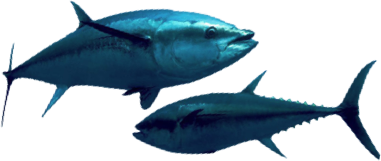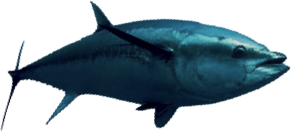The CCSBT has adopted a Compliance Plan that supports its Strategic Plan and provides a framework for the CCSBT, Members and Cooperating Non-Members to improve compliance with CCSBT’s conservation and management measures and to address compliance risks. The Compliance Plan includes a Compliance Action Plan (CAP) that was most recently agreed in 2024 and defines specific activities to address the identified priority compliance risks. The planning period for the current CAP is from 2024-2029 inclusive, however the CAP is reviewed and updated annually by the Compliance Committee. It is therefore a ‘living document’ that over time may be amended and updated to reflect changing priorities and to respond to changing and emerging risks.
Compliance Policy Guidelines
The CCSBT has adopted the following four Compliance Policy Guidelines:
- Minimum performance requirements to meet CCSBT Obligations (Updated October 2024);
- Corrective actions policy (Updated October 2024);
- MCS information collection and sharing (Updated October 2019); and
- Guideline on principles for action and steps to be taken in relation to extraordinary circumstances (Adopted October 2020).
Record of non-Compliance
A record of non-Compliance with Members’ allocation of the global southern bluefin tuna total allowable catch and the corrective action taken in response to that non-compliance is available here.
A wider overview of Members’ compliance with CCSBT Conservation and Management measures is available from the Report of the Nineteenth Meeting of the Compliance Committee.
Quality Assurance Reviews
To date, CCSBT's Quality Assurance Review (QAR) program has provided independent reviews of all Members to help them identify how well their management systems function with respect to their CCSBT obligations and recommended areas where improvement is needed. It was also intended that the QAR program would:
- Benefit the reviewed Member by giving it confidence in the integrity and robustness of its own monitoring and reporting systems;
- Promote confidence among all Members as to the quality of individual Members’ performance reporting; and
- Further demonstrate the credibility and international reputation of the CCSBT as a responsible Regional Fisheries Management Organisation.
The following QARs were conducted between 2013 and 2021:
| Year | Member/CNM | Type of QAR |
| 2013 | Australia, Korea, Japan, New Zealand | Desktop Review |
| 2014 | Fishing Entity of Taiwan | Desktop Review |
| 2014 | Australia, Indonesia | On-Site Review |
| 2015 | Japan | On-Site Review |
| 2016 | Korea, New Zealand | On-Site Review |
| 2017 | Fishing Entity of Taiwan | On-Site Review |
| 2018 | South Africa | On-Site Review |
| 2020-2021 | European Union | Desktop Review |
Based on CCSBT’s updated Strategic Plan, in future the QAR Program will be applied to new countries and/or entities who join the CCSBT Commission. In addition, QARs may be conducted for existing CCSBT Members, but such QARs will be subject to a specific decision made by the Extended Commission (EC) and based on advice from the Compliance Committee (CC).
CC/EC have already agreed that a Member QAR will be conducted for Indonesia in relation to its two-year trial national transhipment observer program that began on 1 November 2023. The aim of this Member-specific QAR will be to provide an independent assessment of the performance of Indonesia’s systems and processes for ensuring compliance with CCSBT’s Transhipment Resolution that have been implemented through the trial. This QAR will be conducted in 2025 and presented to CC 20.
The remaining sections of this page describe individual MCS measures that have been established by the CCSBT.
List of Approved Vessels and Farms
The CCSBT has established records for:
Members and Cooperating Non-Members of the CCSBT will not allow the landing, import or export of SBT caught by fishing vessels, harvested from farms, or transhipped to carrier vessels that are not on these lists. The Authorised Vessel Resolution also contains a requirement for fishing vessels to be issued with IMO numbers where the vessels:
- are over 12 metres in length overall (LOA) and are authorised to operate outside waters under the national jurisdiction; or
- have a gross tonnage (GT) of 100 GT or greater, regardless of where they operate.
Vessel Monitoring System
The CCSBT Vessel Monitoring System (VMS) came into effect immediately after the Fifteenth Annual Meeting of the Commission, on 17 October 2008. It requires CCSBT Members and Cooperating Non-Members with vessels fishing for or taking SBT to adopt and implement satellite-linked VMS that complies with the IOTC, WCPFC, CCAMLR, or ICCAT VMS requirements according to the respective Convention Area in which the SBT fishing is being conducted. For vessels fishing for/taking SBT in any Exclusive Economic Zones not included in the IOTC, WCPFC, CCAMLR or ICCAT Convention Areas, the VMS must operate in accordance with each Member’s/CNM’s respective legislation. When fishing for/taking SBT outside of these areas, the IOTC VMS requirements must be followed.
Carrier Vessels (CVs) authorised by Members and CNMs to conduct at-sea or in-port transhipments involving SBT are also required to have a VMS that is operating in accordance with all applicable CCSBT Resolutions and decisions.
Full details of the CCSBT VMS are available in the Resolution on the Vessel Monitoring System (VMS).
Catch Documentation Scheme
The CCSBT Catch Documentation Scheme (CDS) came into effect on 1 January 2010 and replaced the Statistical Document Programme (Trade Information Scheme) which operated from 1 June 2000. The CDS provides for tracking and validation of legitimate SBT product flow from catch to the point of first sale on domestic or export markets. As part of the CDS, each whole SBT that is transhipped, landed as domestic product, exported, imported or re-exported must have a uniquely numbered tag attached to it and the tag numbers of all SBT (together with other details) will be recorded on a Catch Tagging Form. All transhipments, landings of domestic product, exports, imports and re-exports of SBT must be accompanied by the appropriate CCSBT CDS Document(s), which include a Catch Monitoring Form and possibly a Re-Export/Export after Landing of Domestic Product Form. Similarly, transfers of SBT into and between farms must be documented on either a Farm Stocking Form or a Farm Transfer Form as appropriate. Copies of all documents issued and received are required to be provided to the CCSBT Secretariat on a quarterly basis for compiling into an electronic database. The compiled CDS data is analysed and reconciled to identify discrepancies and support regular reporting.
Full details of the CCSBT CDS are available from the Resolution on the implementation of a CCSBT Catch Documentation Scheme (Updated October 2021).
The majority of Members are using CCSBT CDS centralised tags to tag SBT. These tags are purchased through the CCSBT Secretariat and are distributed by each government to the relevant fishers. Instructions for attaching the centralised tags are provided below in 3 languages:
The other main tags in operation are those used by Australia and Korea. Instructions for attaching the Australian tag are provided below:
Monitoring of SBT Transhipments
The CCSBT program for monitoring transhipments at sea came into effect on 1 April 2009. The program was revised to include requirements for monitoring transhipments in port from 1 January 2015. It was further revised in 2023 to include new strengthening elements to match those already introduced in other tuna RFMOs, and to allow a two-year trial transhipment program for Indonesia to use its own national transhipment observers to observe at-sea transhipments of SBT on listed wooden CVs.
Transhipments at sea from tuna longline fishing vessels with freezing capacity (referred to as “LSTLVs”) include the following requirements:
- Carrier vessels that receive SBT transhipments at sea from LSTLVs must be authorised to receive such transhipments;
- A CCSBT observer must be on board the carrier vessel during the transhipment;
- Carrier vessels must separate and stow SBT by fishing vessel and develop a stowage plan to show the locations in the hold of the quantities of SBT by fishing vessel; and
- Notification and reporting requirements for both the carrier and fishing vessel.
The CCSBT transhipment program is harmonised and operated in conjunction with those of ICCAT and IOTC to avoid duplication of the same measures. ICCAT or IOTC observers on a transhipment vessel that is authorised to receive SBT are deemed to be CCSBT observers provided that the CCSBT standards are met.
Transhipments of SBT in port can only be made to an authorised carrier vessel at designated foreign ports and meet additional notification and reporting requirements to Port State authorities.
Full details of the CCSBT transhipment program are available from the Resolution on establishing a Program for Transhipment by Large-Scale Fishing Vessels (Updated October 2024) and the updated Annex IV, containing the list of Indonesian carrier vessels authorised to tranship at sea is available from Latest Annex IV of the Resolution on Establishing a Program for Transhipment by Large-Scale Fishing Vessels (Updated 10 January 2025).
Port State Measures
The CCSBT adopted a Resolution for a CCSBT Scheme for Minimum Standards for Inspections in Port in October 2015. The Resolution entered into force on 1 January 2017 and was updated in October 2018. The scheme applies to foreign fishing vessels, including carrier vessels other than container vessels.
Under this scheme, a Member wishing to grant port access to foreign fishing/carrier vessels carrying SBT or fish products originating from SBT (not previously landed or transhipped at port) shall, amongst other things:
- Designate a point of contact for the purposes of receiving notifications;
- Designate ports to which foreign fishing vessels may request entry;
- Ensure that there is sufficient capacity to conduct inspections in every designated port;
- Require foreign fishing vessels seeking to use its ports for the purpose of landing and/or transhipment to provide certain required minimum information with a least 72 hours prior notification; and
- Inspect at least 5% of foreign fishing vessel (for vessels which have SBT on board) landing and transhipment operations in their designated ports each year.
List of Vessels Presumed to have carried out IUU Fishing Activities for SBT
The CCSBT has adopted a Resolution on Establishing a List of Vessels Presumed to have Carried Out Illegal, Unreported and Unregulated Fishing Activities For Southern Bluefin Tuna (Updated October 2019).
At each annual meeting, there is an opportunity for the CCSBT to identify vessels which have engaged in fishing activities for SBT in a manner which has undermined the effectiveness of the Convention and the CCSBT measures in force. If vessels are included on the CCSBT IUU Vessel List, then they will be published on this web site and circulated to appropriate regional fisheries organisations. Furthermore, from 17 October 2019, the CCSBT IUU vessel list may include vessels cross-listed from IATTC, ICCAT, IOTC, WCPFC, CCAMLR, SEAFO, SIOFA and SPRFMO IUU vessel lists.
The CCSBT IUU Vessel List is available here.
Market Monitoring
In October 2024, the CCSBT conducted analyses on the distribution of Southern Bluefin Tuna in Japanese and Global markets and agreed to make the summary of the outcome of the market analysis publicly available through the CCSBT website. The market analyses conducted by the CCSBT includes:
- Global Distribution of SBT;
- Distribution of SBT in Japanese Market; and
- Conclusion from comparison and verification between TAC, catch and distribution.
The summary of the market analysis in 2024 is available here.

